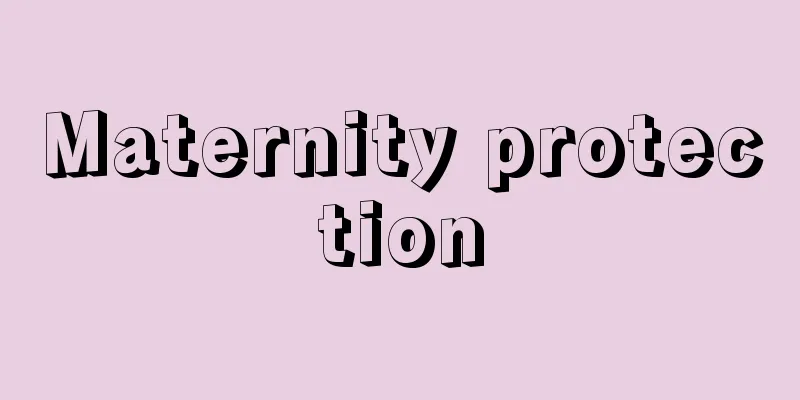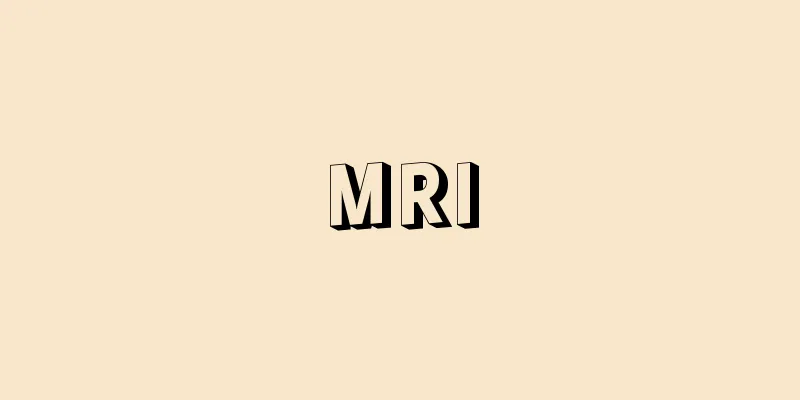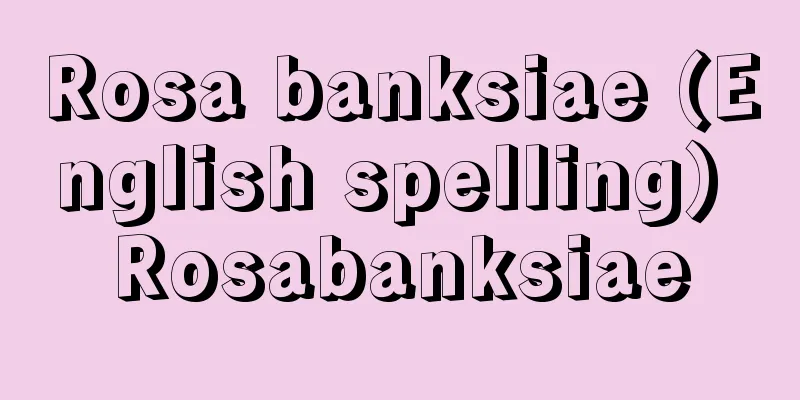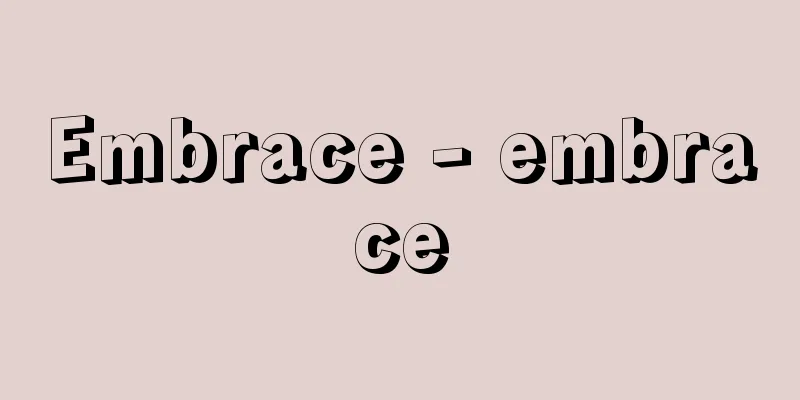Maternity protection

|
It refers to the protection of maternal functions such as pregnancy, childbirth, and breastfeeding, as well as the preparatory functions, and was born as a way of protecting female workers. Maternal functions have a social role in reproducing the labor force of the next generation. However, in capitalism, where the pursuit of profit is the primary goal, the maternal functions of female workers are often at risk, and the need for social protection against this has been recognized and has been institutionalized as a result of the demands of the labor movement. However, there are divided views regarding the scope of maternity protection: those that limit it to matters directly related to pregnancy and childbirth, such as transferring pregnant women to lighter work and maternity leave, and those that take a broader view that includes banning women from working late at night, limiting overtime work, and menstrual leave. The first maternity protection regulations were enacted in the British Factory Act of 1844, which limited women's working hours to 12 hours and prohibited night work. The International Labour Organization (ILO) Convention No. 3 ("Convention relating to the Employment of Women Before and After Childbirth"), adopted in 1919, stipulated six weeks of leave before and after childbirth, but further enhanced provisions were subsequently established by Convention No. 103 ("Maternity Protection Convention") and Recommendation No. 95 ("Maternity Protection Recommendation"). In Japan, the revised Factory Act of 1923 (Taisho 12) first stipulated four weeks of maternity leave before and six weeks after childbirth, but this was not very effective. Maternity protection was established in Japan with the passage of the Labor Standards Act (Act No. 49 of 1947) after World War II. This act stipulated restrictions on overtime and holiday work for female workers, prohibitions on night work, dangerous and hazardous work, and underground work, maternity leave before and after childbirth (six weeks each), childcare hours, and menstrual leave. While maternity leave is leave that can be granted at the request of the individual, postpartum leave is compulsory leave that must be granted regardless of the individual's request. Later, as a result of the movement to expand maternity protection, the Working Women's Welfare Act (Act No. 113 of 1972) was enacted. However, arguments grew that the existence of maternity protection regulations hindered gender equality in the workplace, and so, in conjunction with the enactment of the Equal Employment Opportunity Law (Law Concerning the Promotion of the Welfare of Female Workers, Including Ensuring Equal Opportunities and Treatment Between Men and Women in the Employment Field) in 1985, the Labor Standards Law was amended to significantly relax regulations on night work, overtime work, and holiday work for women working in managerial and professional positions. During this revision, maternity leave was extended to eight weeks. Furthermore, in 1997, at the same time as the previous amendment to the Equal Employment Opportunity Law, the Labor Standards Law was further amended to abolish the prohibition on night work and the restrictions on overtime and holiday work for women. However, male and female workers who are raising children or caring for family members can request restrictions on night work. Since it was proposed at the International Conference on Population and Development held in Cairo in 1994, the concept of maternity protection has been expanded to include the establishment of the right to women's sexual and reproductive health, including contraception, sterilization, abortion, childbirth, breastfeeding, and menopause, from menarche to menopause. The "right to sexual and reproductive health" itself is something that all couples and individuals, including men, have. [Goga Kazumichi] "History of the Maternal Protection Movement" by Kinue Sakurai (1987, Domesu Publishing) " ▽ "Maternal Protection - I Want to Continue Working Shiningly" by Tomie Komada (1998, Gakushu no Tomosha) [References] | | | | | | | | |Source: Shogakukan Encyclopedia Nipponica About Encyclopedia Nipponica Information | Legend |
|
妊娠、出産、授乳などの母性機能およびその準備機能を保護することをいい、女性労働者に対する保護の一環として生まれた。母性機能は次代の労働力を再生産するという社会的役割をもっている。しかし、利潤追求を第一義とする資本主義においては、女性労働者の母性機能はしばしば危険にさらされており、これに対する社会的保護の必要性が認識され、労働運動の要求の成果として制度化されてきた。ただし、母性保護の範囲をめぐっては、妊婦の軽易な業務への転換や産前産後休暇など妊娠・出産に直接かかわる事項に限定する見解と、女性の深夜業禁止、残業制限や生理休暇などを含めて広くとらえる見解に分かれる。 母性保護規定は1844年のイギリス工場法が最初で、女性の労働時間は12時間に制限され、深夜業は禁止された。1919年に採択されたILO(国際労働機関)3号条約(「産前産後に於(お)ける婦人使用に関する条約」)は産前産後各6週間の休業を定めたが、その後、103号条約(「母性保護に関する条約」)、95号勧告(「母性保護に関する勧告」)によってさらに充実した規定が設けられた。 日本では1923年(大正12)に改正された工場法によって産前4週間、産後6週間の休業が初めて定められたが、実効性に乏しかった。日本で母性保護が確立したのは、第二次世界大戦後の労働基準法(昭和22年法律第49号)の成立によってである。このなかで、女性労働者について、時間外・休日労働の制限、深夜業・危険有害業務への就業や坑内労働などの禁止、産前産後の休業(各6週間)、育児時間、生理休暇などが定められた。産前休業は本人の請求により与えられる休業であるのに対し、産後休業は本人の請求とは無関係に与えなければならない強制休業である。その後、母性保護拡充を要求する運動の成果として勤労婦人福祉法(昭和47年法律第113号)が制定された。 ところが、母性保護規定の存在が職場における男女平等を妨げているという議論が強まり、男女雇用機会均等法(雇用の分野における男女の均等な機会及び待遇の確保等女子労働者の福祉の増進に関する法律)の制定(1985)と抱き合わせに、労働基準法が改正され、管理職・専門職に従事する女性に対する深夜業、残業・休日労働の規定が大幅に緩和された。この改定の際に産後休業が8週間に延長された。さらに1997年(平成9)には先の男女雇用機会均等法の改正と同時に労働基準法もさらに改正され、女性に対する深夜業の禁止、残業・休日労働の制限規定が撤廃された。ただし、育児または家族介護を行う男女労働者は深夜業の制限を求めることができることになっている。 1994年にカイロで開催された「国際人口開発会議」で提起されて以降、母性保護の概念をさらに拡大して、女性の初経から閉経にいたるまで避妊、不妊、妊娠中絶、出産、授乳、更年期まで含む、女性の性と生殖に関する健康(リプロダクティブ・ヘルス)のための権利確立という考え方が広まっている。なお、「性と生殖に関する健康のための権利」自体は男性をも含むすべてのカップルおよび個人が有するものである。 [伍賀一道] 『桜井絹江著『母性保護運動史』(1987・ドメス出版)』▽『駒田富枝著『母性保護――輝いて働きつづけたい』(1998・学習の友社)』 [参照項目] | | | | | | | | |出典 小学館 日本大百科全書(ニッポニカ)日本大百科全書(ニッポニカ)について 情報 | 凡例 |
<<: Supplementary budget - Hoseiyosan (English spelling) supplementary budget
>>: Poseidon - Poseidon (English spelling)
Recommend
Basic Act on Measures for an Aging Society
This law (Law No. 129 of 1995) aims to establish ...
Technical Research Headquarters
…The chairman is a full-time position and is the ...
Shen Zhou
A Chinese literati painter and poet in the mid-Mi...
Euphorbia ingens (English spelling) Euphorbiaingens
… [Hiroshi Yuasa]. … *Some of the terminology exp...
TTL - Threatening Threatening
Abbreviation for Time To Live, this is a field in ...
Demon King Dozaburou - Onio Dozaburou
...The brothers Danzaburou and Kiou are known as ...
Grasshopper (grasshopper)
A general term for insects belonging to the superf...
Freiburg - Freiburg (English spelling) Freiburg im Breisgau
A city in the state of Baden-Württemberg in south...
Kuang-tai-xie-xue (English: The science of evil and wickedness)
This is a term used by the Chinese literati critic...
Coalition government - Rengoseiken
Under the parliamentary cabinet system, a governm...
"Beautiful Nature" - Utsukushiki Tennen
... After that, "theme songs for movies"...
Juno Natalis
…It is probably a remnant of an old fertility rit...
Pegu Dynasty - Pegu-cho (English spelling)
A Burmese kingdom established by the Mon people fr...
Masanori Oguri
...He was the chief retainer of Matsudaira Mitsun...
Heihachiro Togo - Togo Heihachiro
Year of death: May 30, 1934 Year of birth: 1848.1....









